Following are a set of P2 options you may wish to implement. No option is perfect for everyone, but sometimes options that have worked at one facility can work at yours. They might also serve as inspiration. |
Reviewed Coating-General OptionsOptions below have reviewed by pollution prevention specialists. They are commonly recommended and implemented for facilities. |
||
| Don't paint it | ||
| Sometimes there is no need to paint the product at all. Evaluate the necessity of painting all the components and parts you paint. Many facilities paint parts that are never exposed, or do not need a protective/decorative coating. Even if you must paint the product you might be able to coat only one part of the product. | ||
| Pre-coated raw materials | ||
| Sometimes another facility can efficiently coat components cheaper than you can. For instance, you might consider purchasing precoated steel to eliminate the need to paint finished items. This could reduce your environmental reporting burden and save money in the process. | ||
| Aqueous coatings | ||
| Many companies have found successful water-based alternatives to solvent-based paints and saved thousands of dollars in the process. In addition to reducing hazardous waste generation, water-based systems reduce fire hazards and require less protective equipment for operators. This means lower fire insurance rates and less money spent on protective gear. | ||
| Spray guns | ||
| Instead of old style air atomized spray gun system for painting, consider using HVLP (High Volume Low Pressure) paint guns. These can be used with most of the current coating systems. HVLP guns operate with air atomizing pressures of 10 psi or less. Low air pressure is replaced with high volume airflow which results in reduced emissions and better transfer efficiency. | ||
| Fan size | ||
| Increase transfer efficiency by adjusting the fan size on your spray gun. Ideally, you want to spray 6-8 inches from the surface. For narrow and small parts, minimize overspray by decreasing fan size. If you are painting irregularly shaped parts, consider investing in a spray tip that allows the operator to adjust the spray fan. | ||
| Paint cup liners | ||
| If paint colors are changed frequently, consider using disposable paint cup liners. This option will reduce solvent waste and labor costs from cleaning paint pots. If the paint does not contain metals, liners containing dried paint are considered a non-hazardous waste stream. | ||
| Paint booth additives | ||
| Reduce downtime required for periodic paint booth maintenance by using additives such as paint detacktifiers, flocculents, and buffering systems. These additives work together to prevent paint particle buildups, thereby reducing downtime needed for periodic booth maintenance. | ||
| Paint booth filters | ||
| Consider replacing current paint filter elements with plastic substitutes. These elements last longer between replacements, allow increased air flow even when saturated, and are fire treated to reduce combustibility. In some cases, these filters can be washed off for reuse. If you are using water wash control on the booths, consider converting to dry filters. | ||
| Powder painting | ||
| Another option for paint application is powder painting which is most commonly used on metal parts but is also now being used on wood and plastic parts. Powdered paint starts in a supply hopper where compressed air diffuses the paint into a fluidized state. Air pumps move the powder through flexible tubing to the spray guns. The spray guns disperse an electrostatically charged powder directed toward an electrically grounded part. The powder sticks to the part. The coated part is then baked in an oven where the powder melts, flows, and fuses onto the part’s surface. | ||
| Biofiltration | ||
| If you operate a thermal oxidizer, consider switching to a biofiltration system. Biofiltration can effectively reduce air emissions. One form of it uses a compost medium to support the biological organism and adsorb air emissions. Biofiltration is a passive process that requires no fuel input, making it very cost-effective compared to thermal oxidation methods. | ||
| Electrocoating | ||
| Electrocoating is an organic finishing method that uses electrical current to deposit paint onto a metal part. An electrocoat system applies an electrical charge to a metal part that is immersed in a bath of oppositely charged paint particles. The paint particles are drawn to the metal object and paint is deposited, forming an even, continuous film until the coating reaches the desired thickness. At the desired thickness, the film insulates the part. Attraction then stops and the electrocoating is complete. One advantage of this coating method is that it can reach inside corners and other hard to reach areas that other processes often miss. | ||
| Find a Market for Unused Materials | ||
Use
|
||
| Long Life Mineral Spirits | ||
| Replace existing mineral spirits for a higher grade that has a higher recycling lifespan and at the same time reduce the amount of still bottoms and the amount of raw mineral spirits purchased. | ||
| Maximum Utilization | ||
| Ensure that all filters are utilized to their maximum potential prior to disposal. This policy will decrease the amount of filters used, thus decreasing the amount of waste. | ||
| Paint Booth Filter Change Outs | ||
| Utilize a manometer daily to indicate when you should actually change out the filters instead of relying on a visual inspection. | ||
| Controlled spray | ||
| Install dams along the outer edges of part molds or work tables to capture overspray. | ||
| Controlled spray | ||
| Install dams along the outer edges of part molds or work tables to capture overspray. | ||
| Controlled spray. | ||
| Install dams along the outer edges of part molds or work tables to capture overspray. | ||
| Reformulated Coatings | ||
| Work with Coating Vendors to make formulation changes that eliminate/reduce xylene/solvent content emissions. | ||
| Good Operating Practices | ||
| Segregate types of hazardous waste to make them more amenable to recycling. Segregate hazardous waste from non-hazardous waste. Improve maintenance scheduling, record-keeping or procedures. Change production schedule. Other changes in operating practices. | ||
| Automatic Voltage Regulator for Electrocoating | ||
| Install an automatic voltage regulator onto your electrocoating paint system. Voltage to the electrocoating system is adjusted automatically according to the part size in the paint tank. Automatic adjustments result in reduced paint usage when compared to manual voltage adjustments. | ||
| Removal of Process | ||
| Due to facility closure, this process will no longer be performed | ||
| Recycling of Hazardous waste | ||
| Solvent recovery, removing solids form paint thinner, then used for cleaning purposes. Reducing total waste generated at facility. | ||
| Update water filtration system for Electrocoat | ||
| Replace existing water RO / DI system with a double pass RO system. Double pass RO will provide water with a low mS count that in turn helps to control the conductivity in a Electrocoat system, requires less paint, and produces less waste. | ||
| Remix thinners/cleaners with paint | ||
| Use the re-mixed thinner/paint to coat areas which are not higly visible to the consumer's eye. i.e, under trailer, etc. | ||
| Increase use of RCS units | ||
| RCS is a ratio control paint system. It mixes the paint, hardener, and solvent to the correct ratio while painting is in progress, thereby eliminating the need for manual mixing which always results in excessive paint being mixed. RCS system must be properly maintained to get the full benefit. | ||
| Plan Batch Size | ||
| Mix only amount of paint required to perform the coatings repair. | ||
| Add dust to paint products or other product | ||
| Use the dust collector dust in the paint production of recycled paints. Also may add dust collected to joint cement production as a raw material. | ||
| Prolong HEPA life | ||
| Use lighter pre-filters and bag filters to prolong the life of HEPA filters | ||
| Find a Market for Unused Materials | ||
| Use RENEW (www.renewtx.org) to identify a market for unused materials. Paints may be used for primers, solvents may be used by other companies. | ||
| In-line Heater | ||
| When utilizing an electro-static paint application system, add an in-line heater to improve quality of paint job and eliminate need for thinner usage. dde | ||
Find Options for other processes





